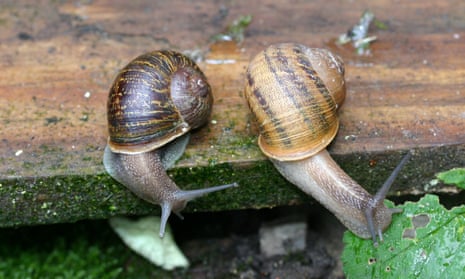A lonely snail who had failed to find a mate because of his unusually-shaped shell has suffered further indignity after two potential love interests coupled up with each other, leaving him out in the cold.
The rare snail – named Jeremy – has a shell whose spirals turn in an anti-clockwise direction, meaning that he cannot mate with the majority of the world’s snail population who spiral the other way because their major internal organs are located on the opposite side of the body.
Angus Davison, a professor at the University of Nottingham in central England, took Jeremy, a common garden snail, into his care and launched an international search in October 2016 to find a possible mate for Jeremy.
“This snail is very rare. It’s literally one in a million,” said Davison, who studies the genetics of these types of garden snails.
The BBC reported in November that Jeremy had finally found love after an enthusiast who heard the appeal introduced him to Lefty from Suffolk in eastern England, who has a similarly-shaped shell.
Then a snail farmer from the Spanish island of Majorca offered up Tomeu, another left-coiling snail. While there was what one scientist described as “flirting” between the two, no lasting bond ensued.
Tomeu and Lefty decided to get together instead.
“It’s like that thing where maybe you introduce your best friend to a girl you’re interested in” and they couple up, Davison told BBC radio.
The duo has now produced their first offspring, of 170 baby snails who coil the opposite way to their parents and the same way as the majority of snails.
Davison, who hoped the union would produce another “lefty” snail, said all hope was not lost.
“It is far more likely that we will get to see left-coiling babies produced in the next generation or even the generation after that,” Davison said.
Jeremy remains in the Nottingham laboratory while the search for a partner for him crawls on.
Agence France-Presse and Reuters contributed to this story

Comments (…)
Sign in or create your Guardian account to join the discussion